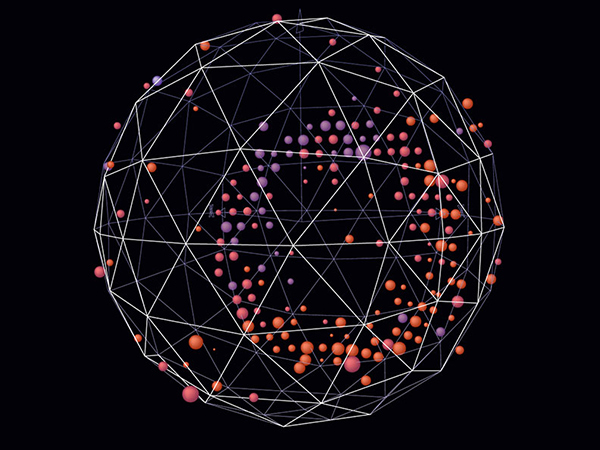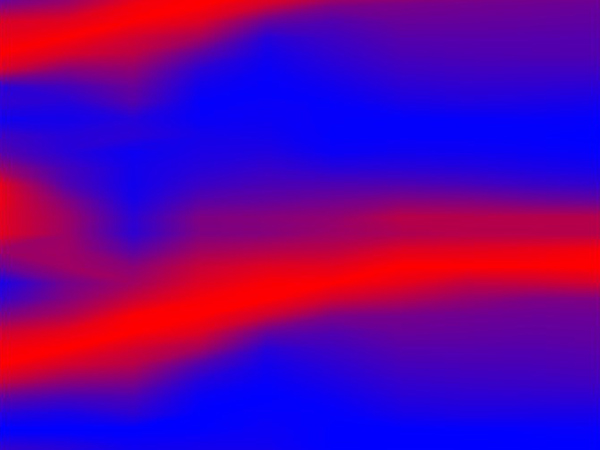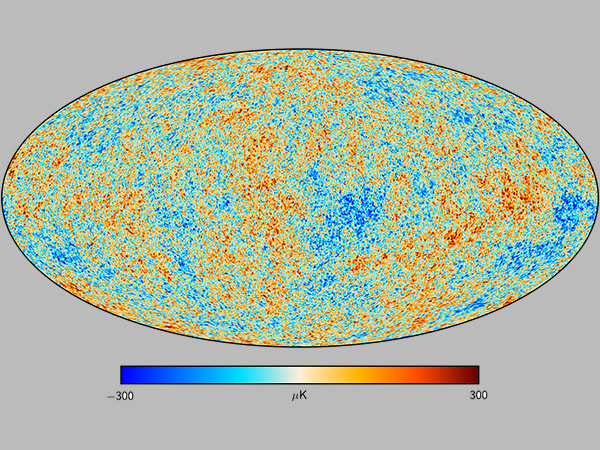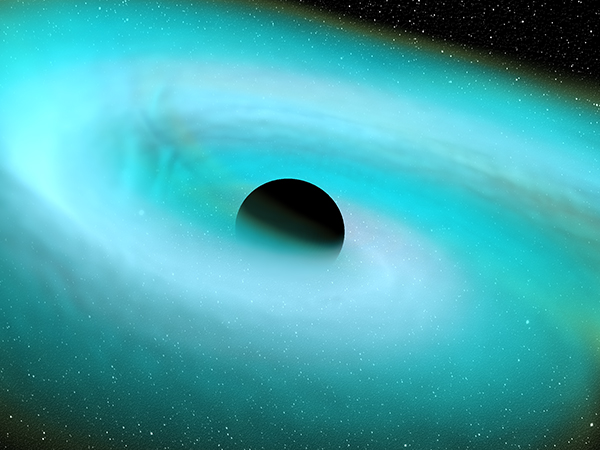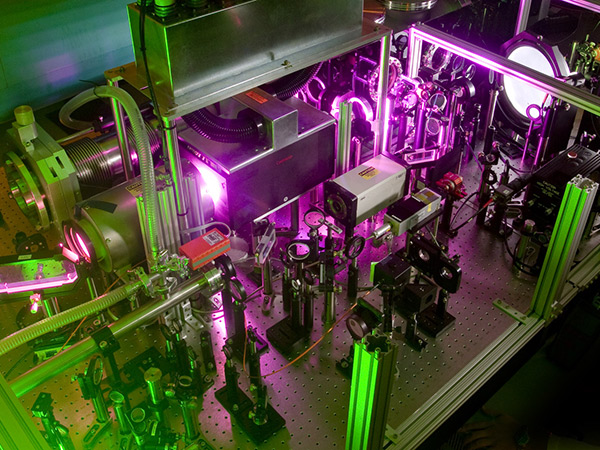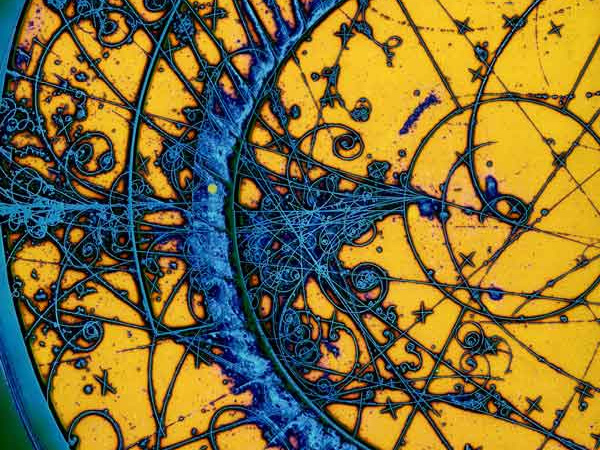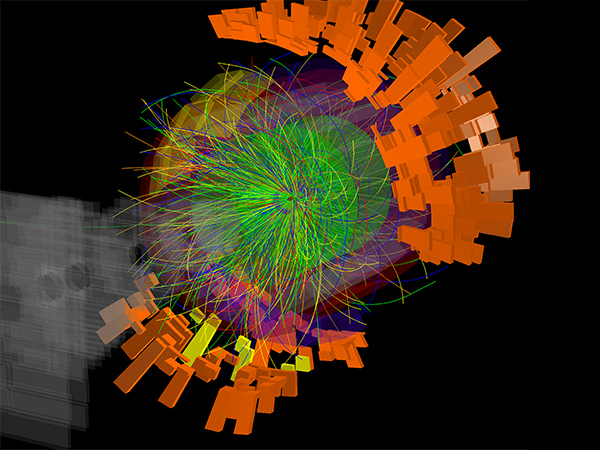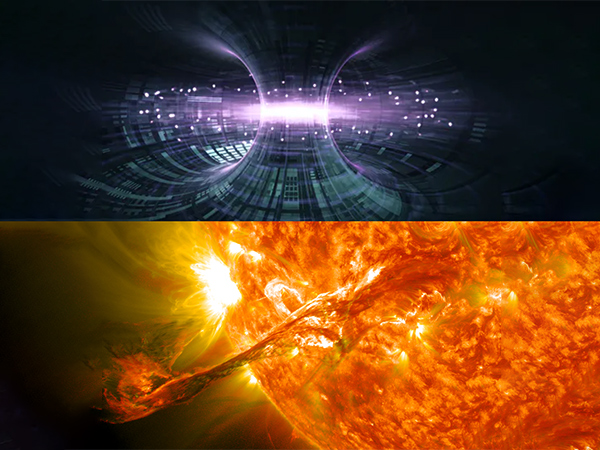Program Overview
The graduate program in Physics at UT Austin provides exceptional academic training, preparing our students to lead as highly regarded scientists, educators, and professionals in academia, as well as in both the public and private sectors.
Located in a vibrant, green capital city, UT Physics is home to:
-
175Graduate Students
(largely out-of-state, including approx. 50% international students)
-
400Undergraduate Majors
(predominantly in-state)
-
55Core Faculty (20% hired over the past 5 years)
(including National Academy of Science members, a Nobel Laureate, and Breakthrough and Wolf Prize recipients; and 10 Women)
-
30Research Scientists
-
23Post-Docs
-
$11MOur Total Research Expenditures
(for 2020–2021—the most recent available year; Department of Physics only)
-
10Areas of Breakthrough Research
including both experimental and theoretical discovery in most of the areas below.
UT Austin and departmental facilities include the world’s most powerful academic supercomputer at the Texas Advanced Computing Center (TACC), a machine shop, a student workshop, a low-temperature, and high-vacuum shop, world-class libraries, and the Texas Petawatt Laser.
This master program intends to provide guidance and assistance for students who have faced personal circumstances and challenges to pursue an advanced degree in physics.
Research Areas
In the grid below, you will find links to our research field profiles. Each profile contains a synopsis of the current subjects in which research is performed in each field, a list of current core faculty members participating in that research(both in Physics and in other departments, if applicable), links to UT center(s), and major collaboration websites (where applicable), and other relevant materials and links. These profiles are generally more up-to-date than most individual research group pages maintained by faculty.
Linked to the entry for each faculty member on the field profiles, you will find a downloadable Fact Sheet in pdf format—these Fact Sheets are updated at least annually and represent the most current information available concerning the work of each professor’s group, including: group statistics, names of current graduate students, names of past graduate students and their post-graduation placement information (where available), a summary of current research, and citations for the group’s most recent publications.
To aid in navigating the above research grid, here is a list of the research areas with a selection of the topics and collaborations pursued within each area by our faculty:
-
Atomic, Molecular, and Optical Physics — cold atom physics, atom optics, quantum optics.
-
Biophysics — cell physics, soft matter, multicellular systems, active matter.
-
Condensed Matter/Solid-State Physics — nanoscience, scanning probe microscopies, quantum materials, ultrafast nonlinear spectroscopy, quantum information, spintronics, superconductivity.
-
Cosmology & High Energy Theory — dark matter, inflation, CMB, dark energy, phenomenology, holography, string theory.
-
High Energy Particle Experiment — large-scale detectors, ATLAS, neutrinos, rare decays.
-
Gravitational Physics — gravitational waves, gravitational wave astrophysics, black holes, numerical relativity, LIGO, LISA.
-
High Energy-Density Science — high-intensity laser interactions with matter, shocks, high-density plasmas in magnetic fields, wakefield acceleration.
-
Nonlinear Dynamics — fluid mechanics, the mechanics of solids.
-
High Energy Nuclear Physics — Relativistic Heavy-Ion Experiments: STAR, sPHENIX (BNL), ALICE (LHC)
-
Plasma/Fusion Physics — ITER, space plasmas, General Atomics.
Culture, Community & Climate
In addition to the wide range of collaborative, interdisciplinary research opportunities we offer, we are also committed to, and fully embody the following:
- we fund all of our students, on a 12-month basis, for a minimum of five years;
- we continue to increase our already high program completion rate;
- we provide a high caliber of teaching and mentoring excellence both in and out of the classroom;
- we carefully foster a supportive, collegial environment;
- and we remain steadfastly determined to transform our discipline for the better and ensure experiences of welcome and belonging for everyone.
Degree Requirements
Here are a few highlights of our doctoral degree requirements:
- We have no written Qualifying Exam, instead, we have an oral Qualifier that includes a presentation of your research to date together with a question and answer period covering both your research and aspects of the pertinent physics.
- We offer flexibility for those who have already taken Core Courses previously.
- We allow students to petition for a course to count as an Advanced Course.
- We require only __ courses, including Advanced Courses in your research field.
For more detailed information, feel free to visit the Degree Requirements section of our Current Students website, especially The New Curriculum in Brief page.
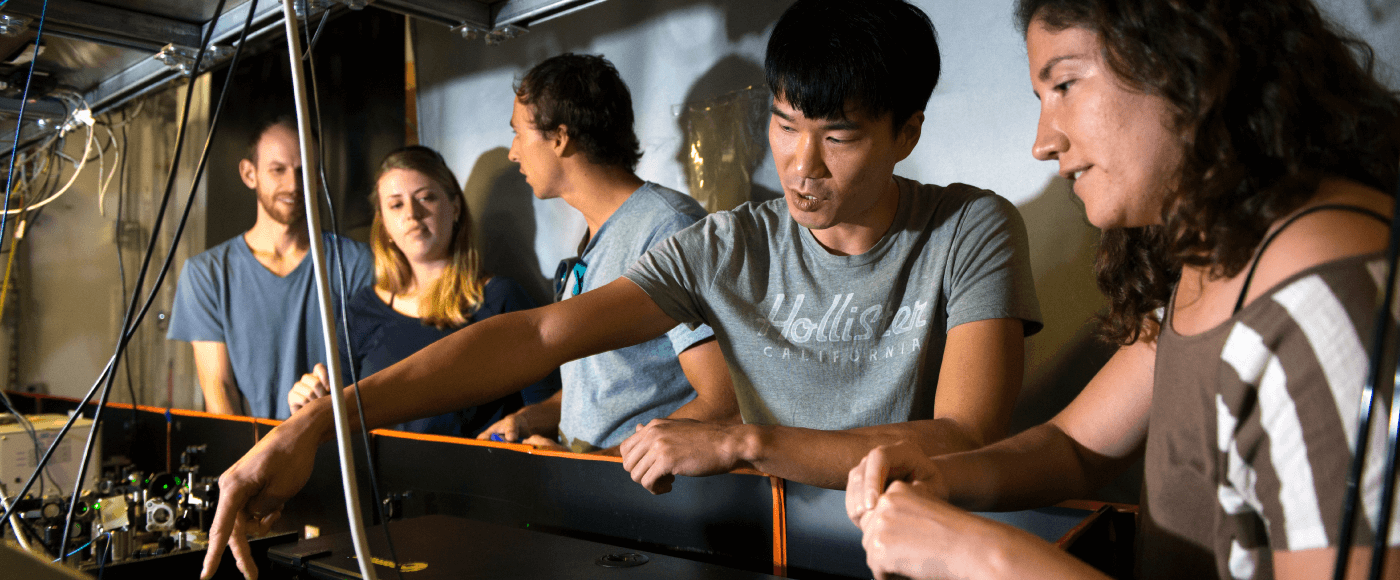
Funding
We fund all of our students, on a 12-month basis, for a minimum of five years. The current 12-month stipend for Teaching Assistants and Graduate Research Assistants is $28,654 (this figure excludes tuition waivers and remission as well as insurance benefits which are part of every Financial Offer we make).
For more detailed information regarding available fellowships please see the Funding page on our Prospective Graduate Students site.
Outcomes
Among the 300 graduates of our doctoral degree program in the ten-year period between 2008 and 2018, 53.85% had their initial post-graduation employment in the Education sector (including university-based post-docs.), 14.23% in National Laboratories and research institutes, and 31.92% in the Private sector with their current employment distribution being 47.90%, 15.97%, and 36.13% respectively.
The Application Process
Annually, The Graduate School and the Department of Physics begins accepting applications for:
- Spring admission on 1 September,
- and Fall admission on 1 October.
To be considered, all applications and their accompanying materials must be submitted before the application deadlines:
- 11:59 p.m. CDT on 1 October for Spring admission;
- and 11:59 p.m. CST on 1 December for Fall
We allow a grace period of precisely two (2) weeks following each of the above-posted deadlines for the uploading of Letters of Recommendation by your recommenders.
Our Graduate Recruitment Committee (GRC) conducts a holistic review of all application materials for indicators that the applicant possesses the essential qualities that will contribute to the successful completion of our degree program. No single factor leads to either accepting or excluding an applicant from admission.



